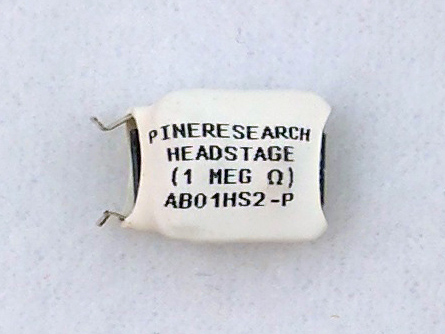FSCV Headstage Amplifier (1 megaohm/1,000 nA/V)
This Headstage Amplifier is designed for use with the Pine Research WaveNeuro Fast-Scan Cyclic Voltammetry Potentiostat System. Installation is as simple as “clicking” the adapter onto the headstage cable. This 1,000 nA/V (1 MΩ), working driven headstage amplifier is wrapped in white-colored shrink tubing to differentiate it from our other headstage gains. This particular adapter is for FSCV experiments where larger/higher surface area electrodes are used; thus, lower gain is required.
Customers must be logged into their account to view prices. Not all regions provide pricing online. If you do not see prices, you can obtain them from the designated sales channel in your region.


